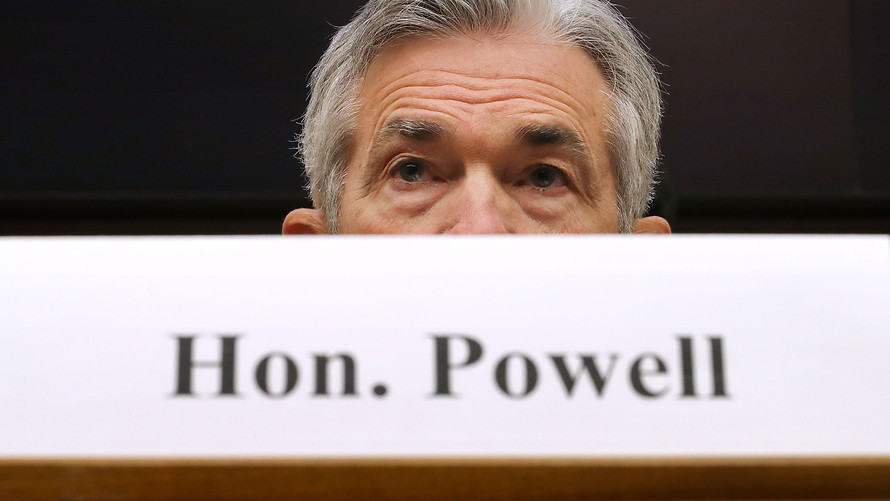
Pay more attention to the data, less to Fedspeak.
That’s one takeaway for stock-market investors after the Federal Reserve on Wednesday delivered an unexpected about-face on policy, signaling that its rate-hike cycle is at least on pause and could conceivably be over. Asked whether the next move would be a hike or a cut, Fed Chairman Jerome Powell told reporters it would “depend entirely on the data.”
“We will all be data dependent,” said Ed Keon, chief investment strategist at QMA, the quantitative arm of PGIM with $128 billion in assets under management.
The Fed’s pivot lit a fire under the stock market, with equities soaring in the wake of the policy statement and during Powell’s news conference. Bonds also rallied, dragging down Treasury yields, especially at the short end, and steepening the yield curve. The softer stance sent the dollar tumbling, which in turn provided a boost to gold.
Stocks posted a mixed finish Thursday, with the S&P 500 SPX, +0.86% up 0.9%, while the Dow Jones Industrial Average DJIA, -0.06% edged around 15 points lower, down 0.1%. Treasurys extended gains, with the 10-year yield TMUBMUSD10Y, +0.43% slumping more than 5 basis points to 2.64%.
The Fed effectively switched from a policy stance centered on inflation targeting back to a “risk-management” approach, said Lena Komileva, chief economist at G Plus Economics, in a Thursday note. One implication is that stocks and other assets perceived as risky will again tend to find support on softer data that’s seen keeping inflation worries in check while potentially suffering in the wake of stronger data.
“The reversion in the Fed’s position from a risk-taker back to a risk-watcher means that ‘bad news’ is once again ‘good news’ but also leaves market rates more sensitive to upside surprises in the inflation data as the profits squeeze from higher U.S. labor costs, disrupted international supply chains and international tariffs begin to feed through,” she said.
The Fed’s more “patient” approach will serve to decouple financial conditions from real economic strength, she said, an echo of the Fed’s quantitative-easing phase and the early stages of the rate-hike cycle, which resulted in a “reflationary and pro-cyclical” stance in relation to the economy “and a strongly risk-positive stance for financial markets.”
Pro-cyclical, indeed. David Rosenberg, chief economist at Gluskin Sheff, noted the shift comes even as the Fed retained its “uber-bullish” view on the domestic economy, with the central bank describing overall activity as rising at a “solid rate,” the labor market as “strong,” and consumer spending expanding “strongly.”
“I would have at least expected the Fed’s comment on the economy to be somewhat less ebullient to justify this shift in the policy bias, but by not doing so tells me that Mr. Market now has Mr. Powell’s ear,” he said, in a note. Instead, the Fed would have been justified tying its change in stance to a deteriorating economic outlook, he said.
Keon said the Fed’s shift from a hawkish to a dovish stance “also means that Fed rhetoric will lose force for moving markets, and the key question will be, ‘Did they stop in time for a soft landing, or has policy already tightened sufficiently to drive us towards recession?’”
Keon sees a 2019 recession as unlikely but noted that there are few prognosticators with a solid record when it comes to predicting when they start. Stocks will likely remain range-bound for “a while,” he said, adding that while QMA expects a positive return this year, the 2019 close will likely be below the 2018 high.
Rosenberg, who has been consistently downbeat on the economic outlook, said the move means an already momentum-driven market will maintain its upside momentum in the near term. But he argued that the Fed’s move is reminiscent of past shifts in 2007 and 2000 that drew the hiking cycle to an end just ahead of recessions.
Rather than the start of a new bull market, he sees the Fed’s shift triggering an extension of a bear market rally that will eventually succumb as incoming data leaves investors to “begin to realize why the policy switch is taking place.”
Investors should keep an eye on long-dated Treasury yields. Rosenberg argued that if market participants were really convinced the Fed is sparking a reflationary bull market, 10-year yields would be on the rise.
Komileva argued that the jury remains out. The “big question” for markets, she said, “is whether an extended period of rate repression will extend the U.S. growth cycle, warranting higher U.S. 10-year yields, or sow the seeds of a move to unsustainable valuations for risky assets that bring deflationary risk back to the long end of the curve.”





























